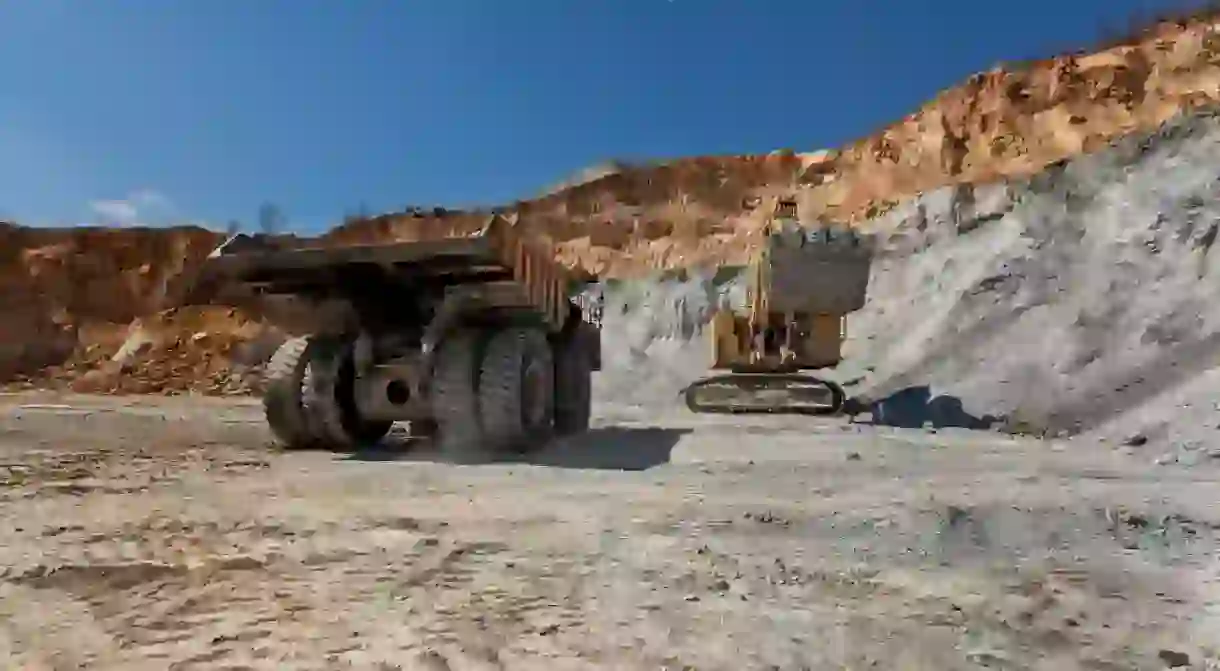10 Awesome Non-Touristy Activities in Serbia

In many ways, simply visiting Serbia is diverting from the tourist path. Belgrade and Novi Sad are popular enough, but much of the country remains relatively undiscovered by the mass of humanity that is modern international tourism. Looking for some non-touristy activities in Europe’s most underrated country? Read on.
Taste the dragon’s sausage
The area around the Vojvodinian town of Bač is well-known for its sausage production, but one porker stands tall above them all. Heavily spiced with paprika, it’s known in these parts as the ‘dragon’s sausage’ and for good reason. The recipe is a heavily guarded secret, although the intensity of the flavour suggests it wouldn’t be a frequent choice. It is excellent, but keep that glass of milk nearby.
Explore the moon
Okay, not the moon exactly, but it sure does feel like it. The surface pit at the mine in Bor is the biggest hole in Europe, proof if proof were needed of the massive mining history of this part of Eastern Serbia. It is a truly unique experience, and the miner’s café may well be the most unusual bistro in the country. Anything chiselled into rock some 400 metres below the surface is absolutely worth checking out.

Embrace the Serbian Paris
If you didn’t know better, you’d struggle to make the link between Šabac and the famous capital of France. The small town in the west of the country does indeed come with the name ‘the Serbian Paris’, however, largely thanks to the vast number of inns here. There are more cafés per capita here than anywhere else in Serbia, and the Bohemian spirit that has long left Paris is well and truly alive here.

A spot of gossip out of the window
Vojvodina is famous for plenty of reasons, and the unusual kibic fenster windows are among them. These curious Baroque creations are best displayed in the town of Vršac, and they seem tailor-made for leaning out of and gossiping with your neighbour. Want to know who Milan from down the street was seen with last night? Or maybe you’re interested in the new job that Jelena from number 27 is starting? Prop those elbows up on a kibic fenster and open the ears.

Visit the last medieval metropolis
Serbia was once a mighty, mighty country, but all good things must come to an end. The glorious Serbian Empire couldn’t withstand the onslaught of the Ottomans, and by the 16th century all was lost. Kupinovo was the last town to fall, the final seat of Serbian leaders Lazarević and Branković before the Turks took over. The oldest Orthodox Church north of the Sava is also found here.

Discover the Republic of Užice
Serbia had a rough time of it during World War II, but the proud nation was also the first to fight back against the violence of fascism and Nazism. The battle began in the area around Užice, where a Republic was declared in 1941. It lasted just 67 days, but it represented the first liberated territory in occupied Europe, a sign that all was not lost. The excellent National Museum in Užice tells the story of the Republic in full.

Culture in the dungeon
The Ottomans built a tower in the modern day town of Knjaževac, which was then called Gurgusovac. It was generally left to wither, but the tumultuous nature of post-Ottoman Serbia introduced a darker element to its walls. Prince Alexander Karadjordjević imprisoned many of his enemies here, leaving them to the cruel and violent whims of the guards. It soon became a true symbol of suffering in the region, so it was no surprise when Miloš Obrenović ordered it destroyed. It has since been renovated, and is now a vibrant open-air theatre during the warmer months.

Drink the mystique of Crkvenac
Rakija is ubiquitous throughout Serbia, and almost every bottle will come with a story. Few tales are as unusual as that of the Crkvenac Cellar, however, located just outside Svilajnac. Some 20,000 litres of the stuff are exported to the USA every year, although there is more to this 19th-century cellar than modern economics. The požegača plum is distilled and left for up to 30 years, before being sold exclusively at auction. It isn’t cheap, but it is unique.
Savour a little bit of international friendship
Norway and Serbia might seem like odd bedfellows, but a little bit of tragedy joins the two European nations together. Prisoners from Yugoslavia were being deported to Norway by the Nazis, but the kindness of the Norwegian people meant that many managed to escape and survive. A Norwegian house was built near Gornji Milanovac as a gesture of friendship, which explains the strange sight of a viking ship next to a traditional Serbian house.

Serbia’s Glass Capital
Its best days are well and truly behind it, but Paraćin is still regarded as the glass capital of this part of the world. The glass factory was known for its unique products, the likes of which were only found in this oft-ignored corner of Serbia. The factory is now owned by a Bulgarian company, but the town is a curious slice of Serbian eccentricity.













